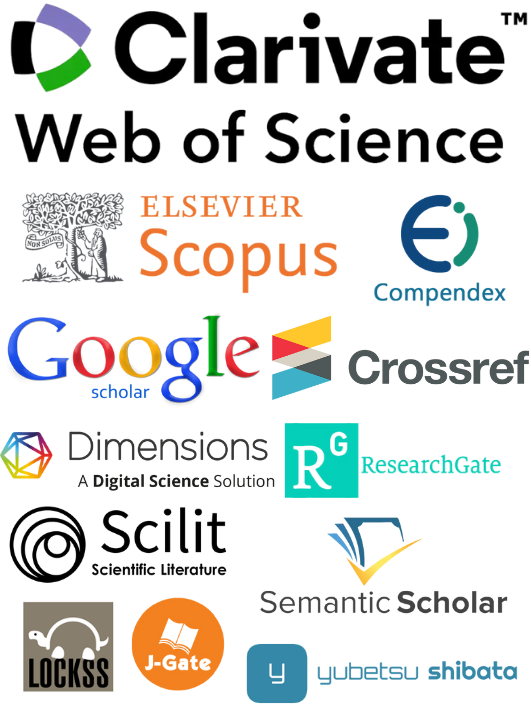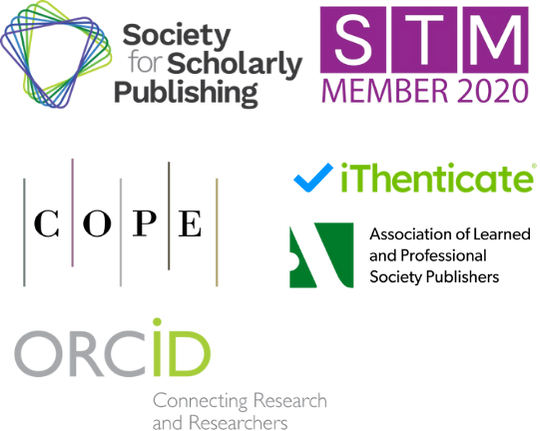Research on Supply Chain Payment Risk Identification and Prediction Methods Based on Machine Learning
DOI:
https://doi.org/10.71222/82c6y398Keywords:
supply chain finance, payment risk prediction, machine learning, risk assessment, financial analyticsAbstract
Supply chain payment risk management has become increasingly critical in modern global commerce, where financial disruptions can cascade through entire networks of suppliers and manufacturers. Traditional risk assessment methodologies often fail to capture the dynamic and complex nature of contemporary supply chain environments, leading to substantial financial losses and operational disruptions. This research proposes a comprehensive machine learning-based framework for identifying and predicting supply chain payment risks through advanced feature engineering and ensemble learning techniques. The study develops a multi-dimensional risk assessment model that integrates supplier financial health indicators, transaction pattern analysis, and macroeconomic variables to enhance prediction accuracy. Experimental validation using real-world procurement and payment data demonstrates significant improvements in risk detection capabilities, achieving 94.2% accuracy in payment default prediction and reducing false positive rates by 37% compared to conventional methods. The proposed framework provides actionable insights for supply chain financial managers and contributes to the advancement of AI-driven risk management solutions in enterprise environments.
References
1. H. Foroughi, G. Wei, S. Torabian, M. R. Eatherton, and B. W. Schafer, "Seismic Demands on Steel Diaphragms for 3D Ar-chetype Buildings with Concentric Braced Frames," in Proc. 12th Canadian Conf on Earthquake Engineering, Quebec City, Canada, Jun.17-20, 2019.
2. S. Wu et al., "Improving the applicability of knowledge-enhanced dialogue generation systems by using heterogeneous knowledge from multiple sources," in Proc. 15th ACM Int. Conf. Web Search Data Mining, 2022, doi: 10.1145/3488560.3498393.
3. G. Wei et al., "Seismic design of diaphragms for steel buildings considering diaphragm inelasticity," J. Struct. Eng., vol. 149, no. 7, p. 04023077, 2023, doi: 10.1061/JSENDH.STENG-11832.
4. G. Wei et al., "Lateral bracing of beams provided by standing seam roof system: concepts and case study," in Proc. Annu. Stability Conf. Struct. Stability Res. Council, Atlanta, GA, USA, Apr. 21–24, 2020.
5. C. Ni et al., "Contrastive time-series visualization techniques for enhancing AI model interpretability in financial risk as-sessment," 2025, doi: 10.20944/preprints202504.1984.v1.
6. G. Wei et al., "Investigating partial tension field action in gable frame panel zones," J. Constr. Steel Res., vol. 162, p. 105746, 2019, doi: 10.1016/j.jcsr.2019.105746.
7. K. Mo et al., "Fine-tuning gemma-7b for enhanced sentiment analysis of financial news headlines," in Proc. IEEE 4th Int. Conf. Electron. Technol., Commun. Inf. (ICETCI), 2024, doi: 10.1109/ICETCI61221.2024.10594605.
8. H. Wang et al., "Automated compliance monitoring: A machine learning approach for digital services act adherence in multi-product platforms," Appl. Comput. Eng., vol. 147, pp. 14–25, 2025, doi: 10.20944/preprints202504.2376.v1.
9. H. Lian, P. Li, and G. Wang, "Dynamic Resource Orchestration for Cloud Applications through AI-driven Workload Pre-diction and Analysis," Artif. Intell. Mach. Learn. Rev., vol. 4, no. 4, pp. 1–14, 2023.
10. H. Foroughi, G. Wei, S. Torabian, M. R. Eatherton, and B. W. Schafer, "Seismic response predictions from 3D steel braced frame building simulations, "in Proceedings of the Annual Stability Conference, Structural Stability Research Council, Atlanta, GA, USA, Apr. 21–24, 2020.
11. Wu et al., "Knowledge-Aware Dialogue Generation via Hierarchical Infobox Accessing and Infobox-Dialogue Interaction Graph Network," in Proc. Int. Joint Conf. Artif. Intell. (IJCAI), 2021.
12. L. Zhu, H. Yang, and Z. Yan, "Extracting temporal information from online health communities," in Proc. 2nd Int. Conf. Crowd Sci. Eng., 2017, doi: 10.1145/3126973.3126975.
13. M. R. Eatherton et al., "Considering ductility in the design of bare deck and concrete on metal deck diaphragms," in Proc. 17th World Conf. Earthq. Eng., Sendai, Japan.
14. S. S. Yan, "Design of obstacle avoidance system for the blind based on fuzzy control," Netinfo Secur., 2014.
15. L. Yun, "Analyzing Credit Risk Management in the Digital Age: Challenges and Solutions", Econ. Manag. Innov., vol. 2, no. 2, pp. 81–92, Apr. 2025, doi: 10.71222/ps8sw070.
16. K. Mo et al., "Precision kinematic path optimization for high-dof robotic manipulators utilizing advanced natural language processing models," in Proc. 5th Int. Conf. Electron. Commun. Artif. Intell. (ICECAI), 2024, doi: 10.1109/ICECAI62591.2024.10675146.
17. Z. Zhang and L. Zhu, "Intelligent detection and defense against adversarial content evasion: A multi-dimensional feature fusion approach for security compliance," Spectrum Res., vol. 4, no. 1, 2024.
18. M. Wang et al., "Distilling the documents for relation extraction by topic segmentation," in Proc. Int. Conf. Doc. Anal. Recognit., Cham: Springer Int. Publishing, 2021, doi: 10.1007/978-3-030-86549-8_33.
19. G. Wei, I. Koutromanos, T. M. Murray, and M. R. Eatherton,"Computational study of tension field action in gable frame panel zones,"J. Constr. Steel Res., vol. 147, pp. 194–208, Mar. 2018.
20. D. Zhang and X. Jiang, "Cognitive collaboration: Understanding human-AI complementarity in supply chain decision pro-cesses," Spectrum Res., vol. 4, no. 1, 2024.
21. G. Wei, X. Wang, and Z. Chu, "Fine-grained action analysis for automated skill assessment and feedback in instructional videos," Pinnacle Acad. Press Proc. Ser., vol. 2, pp. 96–107, 2025.
22. Z. Zhang and Z. Wu, "Context-aware feature selection for user behavior analytics in zero-trust environments," J. Adv. Comput. Syst., vol. 3, no. 5, pp. 21–33, 2023, doi: 10.69987/JACS.2023.30503.
23. D. Zhang and C. Cheng, "AI-enabled product authentication and traceability in global supply chains," J. Adv. Comput. Syst., vol. 3, no. 6, pp. 12–26, 2023, doi: 10.69987/JACS.2023.30602.
24. S. Wu et al., "More is better: Enhancing open-domain dialogue generation via multi-source heterogeneous knowledge," in Proc. 2021 Conf. Empirical Methods Nat. Lang. Process., 2021, doi: 10.18653/v1/2021.emnlp-main.175.
25. Y. Li, X. Jiang, and Y. Wang, "TRAM-FIN: A transformer-based real-time assessment model for financial risk detection in multinational corporate statements," J. Adv. Comput. Syst., vol. 3, no. 9, pp. 54–67, 2023, doi: 10.69987/JACS.2023.30905.
26. C. Zhu, C. Cheng, and S. Meng, "DRL PricePro: A deep reinforcement learning framework for personalized dynamic pricing in e-commerce platforms with supply constraints," Spectrum Res., vol. 4, no. 1, 2024.
27. J. Wu et al., "Optimizing latency-sensitive AI applications through edge-cloud collaboration," J. Adv. Comput. Syst., vol. 3, no. 3, pp. 19–33, 2023, doi: 10.69987/JACS.2023.30303.
28. S. Zhang, C. Zhu, and J. Xin, "CloudScale: A lightweight AI framework for predictive supply chain risk management in small and medium manufacturing enterprises," Spectrum Res., vol. 4, no. 2, 2024.
29. M. Sun, Z. Feng, and P. Li, "Real-time AI-driven attribution modeling for dynamic budget allocation in US e-commerce: A small appliance sector analysis," J. Adv. Comput. Syst., vol. 3, no. 9, pp. 39–53, 2023, doi: 10.69987/JACS.2023.30904.
30. F. Gao, "The Role of Data Analytics in Enhancing Digital Platform User Engagement and Retention", J. Media Journal. Commun. Stud., vol. 1, no. 1, pp. 10–17, Apr. 2025, doi: 10.71222/z27xzp64.
31. C. Zhu, J. Xin, and D. Zhang, "A deep reinforcement learning approach to dynamic e-commerce pricing under supply chain disruption risk," Ann. Appl. Sci., vol. 5, no. 1, 2024.
32. S. Zhang, T. Mo, and Z. Zhang, "LightPersML: A lightweight machine learning pipeline architecture for real-time person-alization in resource-constrained e-commerce businesses," J. Adv. Comput. Syst., vol. 4, no. 8, pp. 44–56, 2024, doi: 10.69987/JACS.2024.40807.
33. M. Li, W. Liu, and C. Chen, "Adaptive financial literacy enhancement through cloud-based AI content delivery: Effectiveness and engagement metrics," Ann. Appl. Sci., vol. 5, no. 1, 2024.
34. T. K. Trinh et al., "Behavioral responses to AI financial advisors: Trust dynamics and decision quality among retail investors," Appl. Comput. Eng., vol. 144, pp. 69–79, 2025.
35. J. Chen and Z. Lv, "Graph neural networks for critical path prediction and optimization in high-performance ASIC design: A ML-driven physical implementation approach," in Proc. Glob. Conf. Adv. Sci. Technol., vol. 1, no. 1, 2025.
36. G. Rao, Z. Wang, and J. Liang, "Reinforcement learning for pattern recognition in cross-border financial transaction anoma-lies: A behavioral economics approach to AML," Appl. Comput. Eng., vol. 142, pp. 116–127, 2025.
37. H. Wang et al., "Distributed batch processing architecture for cross-platform abuse detection at scale," Pinnacle Acad. Press Proc. Ser., vol. 2, pp. 12–27, 2025.
38. Y. Zhao et al., "Unit operation combination and flow distribution scheme of water pump station system based on Genetic Algorithm," Appl. Sci., vol. 13, no. 21, p. 11869, 2023, doi: 10.3390/app132111869.
39. L. Zhu, H. Yang, and Z. Yan, "Mining medical related temporal information from patients' self-description," Int. J. Crowd Sci., vol. 1, no. 2, pp. 110–120, 2017, doi: 10.1108/IJCS-08-2017-0018.
40. C. Jiang, H. Wang, and K. Qian, "AI-enhanced cultural resonance framework for player experience optimization in AAA games localization," Pinnacle Acad. Press Proc. Ser., vol. 2, pp. 75–87, 2025.
41. C. Ni, J. Wu, and H. Wang, "Energy-aware edge computing optimization for real-time anomaly detection in IoT networks," Appl. Comput. Eng., vol. 139, pp. 42–53, 2025.
42. J. Liang et al., "Anomaly detection in tax filing documents using natural language processing techniques," Appl. Comput. Eng., vol. 144, pp. 80–89, 2025
43. Z. Wang et al., "Temporal evolution of sentiment in earnings calls and its relationship with financial performance," Appl. Comput. Eng., vol. 141, pp. 195–206, 2025.
44. C. Ju and G. Rao, "Analyzing foreign investment patterns in the US semiconductor value chain using AI-enabled analytics: A framework for economic security," Pinnacle Acad. Press Proc. Ser., vol. 2, pp. 60–74, 2025
45. J. Wu et al., "Graph neural networks for efficient clock tree synthesis optimization in complex SoC designs," Appl. Comput. Eng., vol. 150, pp. 101–111, 2025.
Downloads
Published
Issue
Section
License
Copyright (c) 2025 Yilun Li, Shengjie Min, Chenyu Li (Author)

This work is licensed under a Creative Commons Attribution 4.0 International License.



